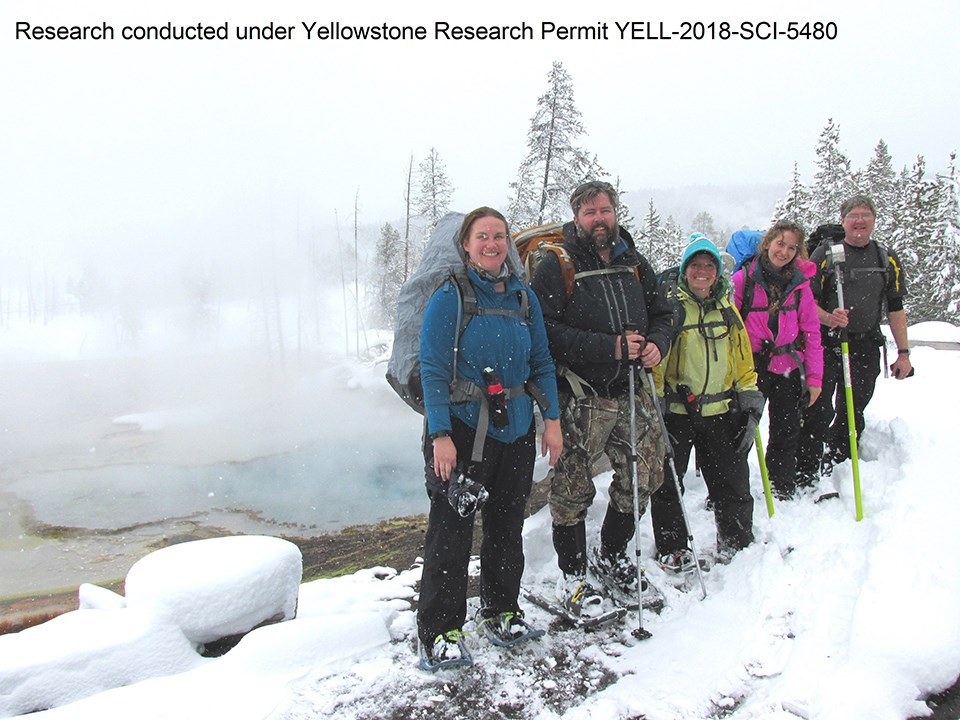Last updated: August 28, 2019
Article
Research Report: Revealing Mysteries of the Microbial World

Research Report: Revealing mysteries of the microbial world
Research Permit Number: YELL-2018-SCI-5480
Principal Investigator: Dr. Brent Peyton
Affiliation: Montana State University- Thermal Biology Institute
Since 2004, Brent Peyton has held a research permit to investigate thermophilic bioprocesses in Yellowstone. How do microscopic heat-loving organisms not only live, but thrive, in the extreme conditions found in and around thermal features? This inquiry brought his field crew to the park in March of 2018 for a wintery visit to their research site. After renting snowmobiles in West Yellowstone, they proceeded 23 miles to the Lower Geyser Basin. A snowshoe walk through deep snow brought them to the hot springs where they focus their studies. The team of five people carried in equipment allowing them to safely collect thermal water and sediment samples to later be analyzed in the lab. This group also conducts research at the Heart Lake Geyser Basin, focusing on high-temperature, high-pH (alkaline) thermal features. Due to the dangers of traveling off of established boardwalks in thermal areas, the team prioritizes safety and communication.
Starting in 2018, they will pioneer a new technique to non-invasively image the microbial mats of Yellowstone’s thermal features. Using a Nuclear Magnetic Resonance- Mobile Universal Surface Explorer (NMR-MOUSE), they will observe the distribution of in situ microbial mats, imaging the biofilm communities to determine properties such as changes in density, vertical and horizontal fluid transport, and fluid flow paths within the mat structure. While the NMR-MOUSE imaging technology has been applied to building materials and biomedicine before, this will be the first time that it is used to study microbial mats. It can non-destructively analyze layered structures, allowing researchers to observe the distribution of in situ microorganisms without disturbing them. The impact on the microbes will be extremely low to none.
Also starting in 2018, they will collaborate with National Park Service employees and volunteers who are cleaning trash out of thermal features in front-country areas of the park. Researchers plan to collect plastic trash as it is removed from thermal features in order to isolate the microbes growing on the plastic. They might be able to identify microbes capable of degrading and assimilating plastics, which are a growing environmental concern.
Learn more about microbial research here: http://tbi.montana.edu/
